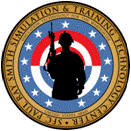|
|
MST-READI (Medical Simulation TRaining TEchnology EvAluation DesIgner) |
|||
|
|
||||
|
|
||||
|
|
||||
The following subsections are provided to help the TEE designer learn about two commonly used models for Training Effectiveness Evaluation, a basic set of useful guiding principles, common evaluation methods that are used, and importantly potential threats to validity when making conclusions based on collected data: TEE Models: two widely known models—Kirkpatrick’s model of training effectiveness, and the Training Intervention Evaluation Research (TIER) model General Principles: guidelines to assist in establishing an overall approach to the TEE Simulation Characteristics: the impact of simulation characteristics on evaluation design and a summary of RDECOM STTC projects Evaluation Methods: an overview of common methods for evaluating the design of a simulation based training system, whether a working prototype, or a final product Research Validity: The validity of a TEE reflects the accuracy of the research results, that is, how confident we can be that we can attribute the observed changes to the training. Potential threats to validity are described. The knowledge contained in these subsections has been applied in developing the MST-READI model, but familiarity with it will help the user understand why the MST-READI model has particular guidance. |
||||
|
MST-READI is a collaborative research effort among US Army RDECOM-STTC, OSDi and CWS, funded by RDECOM-STTC
|
||||
